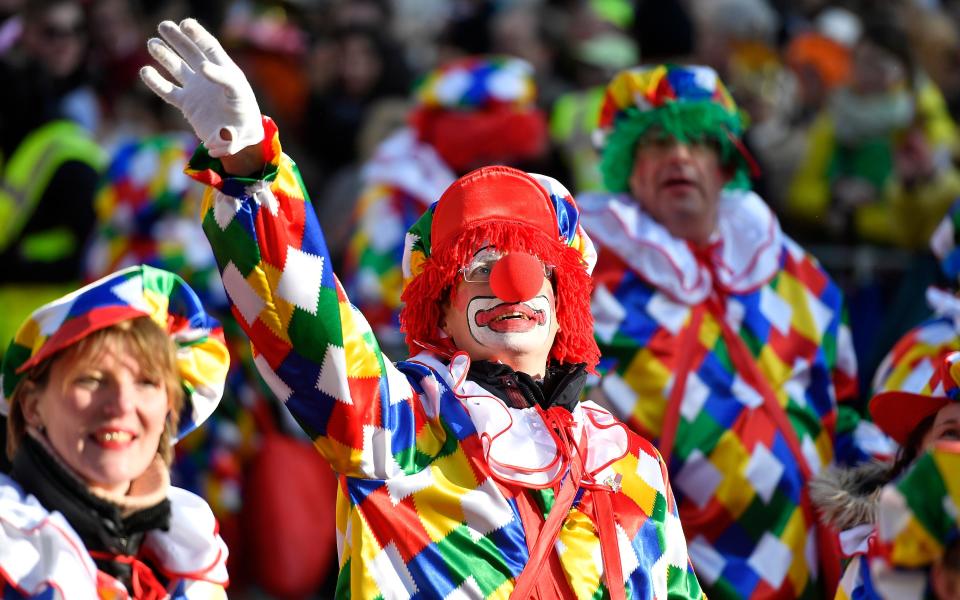April Fool's Day: How Chaucer, calendar confusion and Hilaria led to pranks and fake news

April Fool's Day is around the corner, falling on a Monday this year to alleviate those back-to-work blues. It is a tradition in Western societies to take part in pranks and trickery on April 1 every year, taken as an opportunity by many to inflict some quick humour into an otherwise ordinary day.
But how did the day begin – and how is it celebrated around the world today? Here is everything you need to know.
The first fool
The origins of the day are uncertain. One common April Fool's theory is that the tradition stems from the introduction of the Gregorian calendar in 1582 across continental Europe.
When Pope Gregory XIII called for New Year’s Day to be celebrated on January 1 instead of the end of March, the joke was on those who missed the memo and celebrated New Year’s Day on April 1. Those caught out were inevitably made fun of, and sent on fools' errands.
However, because Britain did not adopt the new calendar until 1752, it is almost certain that April Fool's Day did not appear in the UK in this way.
Some say the day was initially inspired by Geoffrey Chaucer's The Canterbury Tales, written in 1392. In the 'Nun's Priest's Tale', the poet describes how the vain rooster Chauntecleer is tricked by a fox, 32 days since the beginning of March, which coincides with April 1:
Whan that the month in which the world bigan,
When the month in which the world began,That highte March, whan God first maked man,
Which is called March, when God first made man,
Was compleet, and passed were also,
Was complete, and passed were also,
Syn March [was gon], thritty dayes and two,
Since March had gone, thirty days and two,
Bifel that Chauntecleer in al his pryde
Befell that Chauntecleer in all his pride
Another theory places the pranks of April Fool's Day in the passing of the first day of spring. Festivals have historically marked the end of winter with mischief, such as the Ancient Roman festival of Hilaria. On the first day after the vernal equinox, citizens would celebrate the end of the winter gloom by dressing in disguises and attending masquerades.
In reality, the origins of annual mischief on April 1 are lost among tales of national mythology and time. Every society offers a different story about how April Fool's Day started. It became a cornerstone of the annual calendar by the 1700s, marking April 1 as the funniest day of the year.
The best April Fool's Day pranks
Over the years, there have been some weird and wonderful jests that have made a fool out of all of us.
1. Fools' Day Parade
Since 1986, press releases for the New York City April Fools' Day Parade - which doesn't exist - have been issued every year.
2. Left-handed burger
In 1998, Burger King reeled in customers with a full-page advert in USA Today for its 'left-handed Whopper' - with all the condiments rotated 180 degrees especially for left-handed diners. The fast-food chain later announced 'Everyone knows that it takes two hands to hold a Whopper!'
3. Doggy high chair
Ikea made a fool out of its furniture fans by producing and releasing a high chair for dogs in 2011.
4. Trampoline aisles
Tesco raised our hopes in 2015 with their promise to introduce trampoline aisles in their stores, to help us reach the top shelves more easily.
5. Flying penguins
In 2008 the BBC caught viewers out by running a video clip of flying penguins, claiming the birds were flying to tropical rainforests in South American to escape the harsh Antarctic weather.
April Fool's in the media
Although April Fool's activities are often trivial, there is an increasing trend for big brands and media organisations to turn the tables on consumers.
According to the Museum of Hoaxes, the BBC's Panorama were the first to televise an April Fool's Day effort in 1957. The plan was the brainchild of Austrian filmmaker Charles de Jaeger, who captured footage of farmers harvesting Swiss spaghetti trees.
A British audience, unfamiliar with pasta, reacted with as much amusement as amazement, leading to the spaghetti spoof becoming an instant icon of April Fool's trickery.
Sixty years later, in 2007, Radio 4 told listeners of the Today programme that God Save The Queen would be replaced by a techno European Beethoven track. An event that seems even more unlikely today.
In an era of 'fake news' and instant social media circulation, it can seem that every day is more foolish than the next. Last year, companies capitalised on this, with reports of avocado-flavoured Coca-Cola and a chocolate-flavoured dessert burger at Burger King. Not forgetting the EU's trolling on Twitter when they announced all EU passports would be turning dark blue.
Increasingly, however, organisations are turning their nose up at the day because they do not want to be accused of spreading 'fake news'; in 2017, Swedish newspaper Smålandsposten and Norway's Bergen Times opted out of April Fool's Day puns in their pages.

April Fool's Day around the world
Around a dozen countries celebrate April Fool's Day, with the 'day of lies', or dia da mentira, recognised in Brazil.
Belgium, Italy and France acknowledge April 1 as 'April Fish' day. Called Poisson d’Avril in French, or pesce d'aprile in Italian, the day sees children taping fish on people's backs.
In Scotland, April Fool's Day was formerly known as Huntigowk Day – gowk being Scottish for a cuckoo or a foolish person. Traditionally, people were sent on a foolish errand to deliver a sealed message reading ‘Dinna laugh, dinna smile. Hunt the gowk another mile’.
In Iran, pranks have been played on April 1 since 536 BC. The day is the 13th day of the Persian New Year, and is called Sizdah Bedar. Families and friends will mark the new season by spending the afternoon outside with food, games and jokes.
India’s Holi festival is celebrated in March. On this day people play jokes, throw coloured dust and wear face and body paint to officially welcome spring.
Meanwhile, in Portugal people throw flour over each other.
Danes, Finns, Icelanders, Norwegians and Swedes also celebrate April Fool's Day, heralding warmer weather after the long winter.
Prankster performances
Although no reference is made to April Fool's Day in any of Shakespeare's works, many of his plays feature a fool, clown or jester character.
Puck and Bottom in A Midsummer Night's Dream, The Fool in King Lear and Feste in Twelfth Night are perhaps the most notable examples.
The fool was usually a clever peasant or commoner who used his wits to outdo people of higher social standing. The character often appears after dramatic or horrific scenes, bringing a bit of light or comic relief to the stage. The fool was also used to make complex ideas easier for the audience to understand.
The 1986 horror film April Fool's Day featured a group of college students staying at a friend's remote island mansion. They begin to fall victim to an unseen murderer over the April Fool's Day weekend. A remake of the film was made in 2008.
Foolish food recipes



Roast apricot and orange-blossom fool recipe


 Yahoo News
Yahoo News 